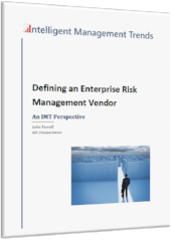When considering what constitutes an effective decision-making process, another question takes priority - What is a good business decision? The snarky response from any confident executive is usually “one that makes money.”

Sure, the bottom line return is usually the ultimate criterion for judging most business decisions, but it does not qualify as a general standard for all individuals or all business situations.
The definition of a good business decision depends on the context of organizational objectives, timing, available resources, and risks. Given this fact, are there any qualities or criteria that can define a good decision in any circumstance? This post offers ten business principles to consider, but, in keeping with the blog theme, we first assess the dynamic parameters involved.
Wayward Business Management Trends Shape Current Judgement
On a micro level, single business decisions can only be judged against the unique context and objectives of their specific situation. The factors involved are always changing. But even on a macro level, major trends in management concepts and business outcomes have shifted the definition of good business decisions over time.
As the science of business management practices developed over the past century, unintended consequences, moral hazards, or just pure selfish intent surfaced detrimental outcomes that can result if money-making success is the only focus for judging management decisions.
Even if you were not an environmentalist, the daily smog index and the teary Iron Eyes Cody in the 1960s and 1970s made It obvious the criteria for assessing some of our business decisions had to change. The founding of the Environmental Protection Agency shifted the calculation of decision outcomes to support broader social needs. This Air Quality Index map offers some evidence of the positive effects of altering the criteria for making better business decisions in the US.
The 1980s brought scrutiny of management decision-making process time horizons. The US obsession with driving quarterly revenue and profit performance for shareholder value was attacked as inferior to the consensus-building and long-term strategic focus prevalent in the Japanese business culture. Jeff Bezos then proceeded to demolish the notion that a US company could not build market value based on long-term planning. His nearly 23-year old Amazon did not turn a profit for its first nine years, still prefers to reinvest profits, and is currently in a race to become the first trillion-dollar valued company.
More executives now cite building long-term shareholder value as their pithy criterion for good decisions versus the immediate returns sought in the 1980s. Nearly 200 privately-funded start-up companies are now in the $1 billion-valued unicorn club. We can remove revenue and profit generation, at least temporarily, from the assessment of good business decisions.
The turn of the century tested the integrity of business entities. Ethical concerns are always an element of decision assessments, but the spectacularly deceptive practices of Enron and WorldCom raised the consequences of sinister decisions into the multibillion-dollar range. The Sarbanes-Oxley Act of 2002 instituted greater oversight, transparency, and accountability to protect investors.
Finally, the 2008 financial crisis exposed the fragile levels of risk exposure that seeped into the decisions of some of the most systemically important US financial institutions. Once again, regulatory requirements were developed to impose guidelines for risk exposure and governance expectations.
Ten Principles for Judging a Business Decision
Our collective experience at the macro-economic level provides evidence that the criteria for good decisions can change over time. The solutions to past transgressions included attaching costs to externalities (government penalties), reassessing and adjusting the fundamental approach to decision making models, and realigning outcome assessments in the context of organizational value over time.
For any business, the ultimate authority to assess and influence business decisions lies with owners who set overall expectations. Their directives for good business decisions, articulated through board members, now must incorporate not only their own interests and those of their customers, but also the influential pressures from government regulations and third parties like politicians and social activists. At the same time, business schools, academics, the media, consultants, and blog writers offer added opinions for judging business decisions.
With consideration of historical business, cultural, and information technology trends, here are ten general management principles for assessing business decisions from this blog-writing/industry research analyst/consultant:
- Objective-Oriented
The business decision is set in the context of specific organizational goals. This may include reaching certain corporate objectives or preventing a competitor from achieving their goals.
- Informed
The decision considers all available information about past, present, and future conditions which may help determine outcomes.
- Selective
The decision is selected as the best option from a set of considered alternatives.
- Risk Optimized
The decision optimizes the balance of risk and reward that is acceptable for the organization's risk appetite, including maximizing the certainty of the outcome.
- Accommodating
The decision considers all stakeholder interests including those of shareholders, employees, customers, partners, suppliers, regulators, and the public. This includes addressing and balancing all business, regulatory, and ethical concerns.
- Unbiased
The organizational decision is free from personal, group, data, or any other decision biases.
- Actionable
The decision confirms and activates available resources. It is both specific and pragmatic.
- Animating
The decision gains participation of all parties needed to take action. This can be based on gaining buy in during the decision-making processes or provoking participation by outlining penalties for nonaction.
- Timely
The decision is made known to all participants at a point that allows enough time to act given the resource and process requirements and expected customer and competitive responses.
- Documented
Any important business decisions should be documented so they may be communicated, defended, assessed, and corrected as needed.
While Monday morning quarterbacking assesses decisions based on outcomes, this set of management principles allows an assessment of business decisions as they are made. Risks always have the potential to create catastrophic results even for the best decisions. A business decision maker can only assure they are taking the proper steps to optimize their choice based on available information at the time of the decision.
Third-party influencers, cultural changes, technology advances, and information accessibility can significantly alter the criteria for assessing good decisions over time. The next Ixnay Ceteris Paribus blog post will translate how the principles of a good decision outlined above can drive the structure of a good business decision-making process.







